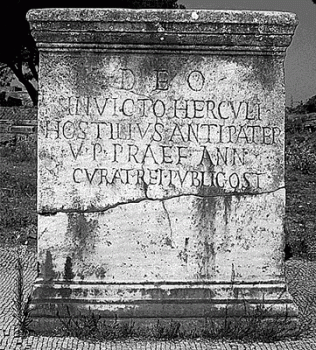American Journal of Archaeology | The Journal of the Archaeological Institute of America
You are here
A Hall for Hercules at Ostia and a Farewell to the Late Antique “Pagan Revival”
April 2010 (114.2)
A Hall for Hercules at Ostia and a Farewell to the Late Antique “Pagan Revival”
In 1945, Herbert Bloch published an inscription from Ostia recording the restoration of a cellam Herc[ulis] in the late fourth century and suggested that it heralded the last pagan revival in the western Roman empire. Social historians now largely dispute this thesis, yet the details of the Ostian evidence remain unchallenged. This article demonstrates that the Hercules inscription, which Bloch attributed to the so-called Temple of Hercules (1.15.5) at Ostia, more probably records the restoration of a bath complex once decorated with the labors of Hercules. Given the persistence of traditional religious practices now known to have characterized the Late Antique city, neither the restoration of the baths nor the temple need bear the weight of religious revivalism. Evidence suggests that the urban image of fourth-century Ostia remained inconspicuously traditional, even as Christianity gained a more visible presence in the town.
A Hall for Hercules at Ostia and a Farewell to the Late Antique “Pagan Revival”
By Douglas R. Boin
American Journal of Archaeology Vol. 114, No. 2 (April 2010), pp. 253–266
DOI: 10.3764/aja.114.2.253
© 2010 Archaeological Institute of America


